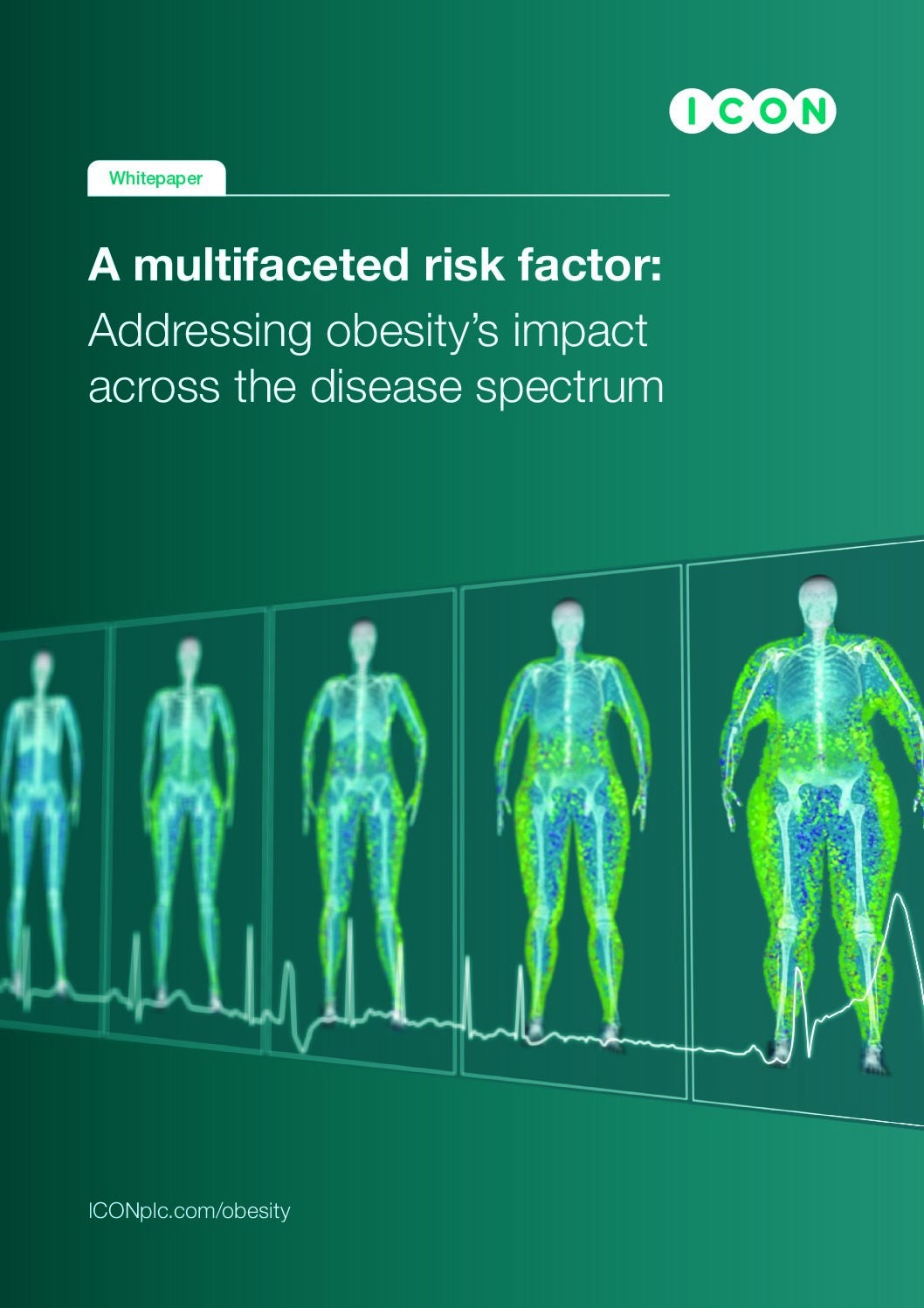
The striking overlap between type 2 diabetes and obesity reflects the convergence in the underlying pathophysiology of these conditions – so much so, in fact, that the term “diabesity” was coined to describe diabetes in the context of obesity. As recognition of the overlap between obesity and diabetes has grown, so have efforts to develop treatments that can treat the two conditions in tandem.
Type 2 diabetes is characterised by abnormally high blood sugar (glucose) levels due to a combination of insulin resistance – in which cells become less responsive to insulin signals – and impaired insulin secretion by pancreatic beta cells. Together, insulin resistance and insufficient insulin secretion result in a profound dysregulation of insulin-mediated processes, which maintain steady levels of metabolic fuel in the blood, despite discrete intervals of consumption and fasting.2
Specifically, insulin mediates mechanisms for lowering the levels of circulating glucose, free fatty acids and amino acids, while promoting their synthesis and storage as glycogen, lipids and proteins respectively. For instance, insulin, released by the pancreas in response to elevated blood glucose levels, promotes the transport of glucose into the cells of the liver and skeletal muscle, and its synthesis into glycogen, so that it can be stored. Meanwhile, it inhibits the degradation of glycogen and the release of glucose back into the bloodstream.2
Obesity is key
Mounting evidence suggests that, in most instances, the insulin resistance that precedes type 2 diabetes is obesity related. Obesity-related insulin resistance explains why weight loss can improve and sometimes normalize insulin sensitivity in obese patients with type 2 diabetes.3
However, more than 70 percent of the obese population is insulin resistant, and only a subset of these patients will develop type 2 diabetes.4 The reason why some of these patients develop diabetes while others do not may be explained in part by genetic factors, such as those that may contribute to the impairment of pancreatic beta cells.5
That said, many of the molecular mechanisms for obesity-driven insulin resistance also contribute to the impairment of pancreatic beta cells. A number of these proposed mechanisms are now supported by the successful development of therapeutic interventions that treat obesity and diabetes.
For example, one well-established factor in obesity-driven insulin resistance is chronically elevated levels of free fatty acids (FFAs).6 Overabundant adipose tissue releases high levels of FFAs into the blood, which are then deposited in other tissues. These deposits may blunt insulin signaling in muscle and liver cells, and contribute to the loss of pancreatic beta-cells. As a result, drugs targeting FFA receptors are in development for the treatment of obesity and type 2 diabetes.7
Obesity-driven changes in the endocrine activity observed in adipose tissue and in the gastrointestinal tract may also drive insulin resistance and reduced insulin secretion. For instance, the amount or effect of a gut-derived hormone, glucagon-like peptide-1 (GLP-1), can be reduced in obese patients.6 GLP-1 increases insulin secretion by the pancreas, and also increases feelings of satiety. Therefore, an obesity-driven reduction in, or reduced sensitivity to, GLP-1 contributes to insulin insufficiencies that underlie type 2 diabetes. This has made GLP-1 an ideal therapeutic target for both conditions, as evidenced by the efficacy of GLP-1 receptor agonist-based medications and bariatric surgery.
By binding to GLP-1 receptors, GLP-1 receptor agonists promote insulin secretion and synthesis, slow gastric emptying and reduced appetite.6 Meanwhile, post-bariatric surgery changes include large increases in GLP-1, along with other gut-derived hormones involved in satiety and blood-sugar regulation. In addition, changes in the gut microbiome after surgery alter the absorption of nutrients. Many of these changes occur so rapidly that patients ostensibly receiving an obesity treatment return home from the hospital without the need for diabetes medications.8
Enhanced understanding
Along with identifying promising therapeutic targets, an improved understanding of the mechanisms underlying obesity and diabetes provide insight into why some patients respond poorly to treating diabetes in isolation. For example, several classes of anti-diabetic medications, including insulins, effectively address insulin deficiency, but are associated with the risk of weight gain. These treatments may be suboptimal for some diabetic patients with obesity-driven insulin resistance.9
Meanwhile, certain treatments –- such as GLP-1 receptor agonists –- which address the underlying pathophysiology shared by diabetes and obesity, are receiving well-deserved attention, and are shifting development pathways for drugs that have the potential to treat both conditions. Historically, asset development – including the development of GLP-1 receptor agonists – proceeded from diabetes to weight loss indications. However, there is now increased interest in the simultaneous development of assets for diabetes and obesity as we recognise the need to address the growing incidence of obesity and diabetes in tandem.
Download the whitepaper on this page to learn how we can help support your clinical trials for endocrine & metabolic disorders including diabetes and obesity.
References
- Saltiel AR, Kahn CR. Insulin signalling and the regulation of glucose and lipid metabolism. Nature. 2001;414(6865):799-806. doi:10.1038/414799a
- Gerich JE. Insulin Resistance Is Not Necessarily an Essential Component of Type 2 Diabetes1. J Clin Endocrinol Metab. 2000;85(6):2113-2115. doi:10.1210/jcem.85.6.6646
- Calori G, Lattuada G, Piemonti L, et al. Prevalence, Metabolic Features, and Prognosis of Metabolically Healthy Obese Italian Individuals. Diabetes Care. 2011;34(1):210-215. doi:10.2337/dc10-0665
- Walker JT, Saunders DC, Rai V, et al. Genetic risk converges on regulatory networks mediating early type 2 diabetes. Nature. Published online December 4, 2023:1-9. doi:10.1038/s41586-023-06693-2
- Ruze R, Liu T, Zou X, et al. Obesity and type 2 diabetes mellitus: connections in epidemiology, pathogenesis, and treatments. Front Endocrinol. 2023;14. Accessed September 22, 2023. https://www.frontiersin.org/articles/10.3389/fendo.2023.1161521
- Ichimura A, Hasegawa S, Kasubuchi M, Kimura I. Free fatty acid receptors as therapeutic targets for the treatment of diabetes. Front Pharmacol. 2014;5:236. doi:10.3389/fphar.2014.00236
- Conte C, Lapeyre-Mestre M, Hanaire H, Ritz P. Diabetes Remission and Relapse After Bariatric Surgery: a Nationwide Population-Based Study. Obes Surg. 2020;30(12):4810-4820. doi:10.1007/s11695-020-04924-3
- Hanefeld M, Fleischmann H, Siegmund T, Seufert J. Rationale for Timely Insulin Therapy in Type 2 Diabetes Within the Framework of Individualised Treatment: 2020 Update. Diabetes Ther. 2020;11(8):1645-1666. doi:10.1007/s13300-020-00855-5



